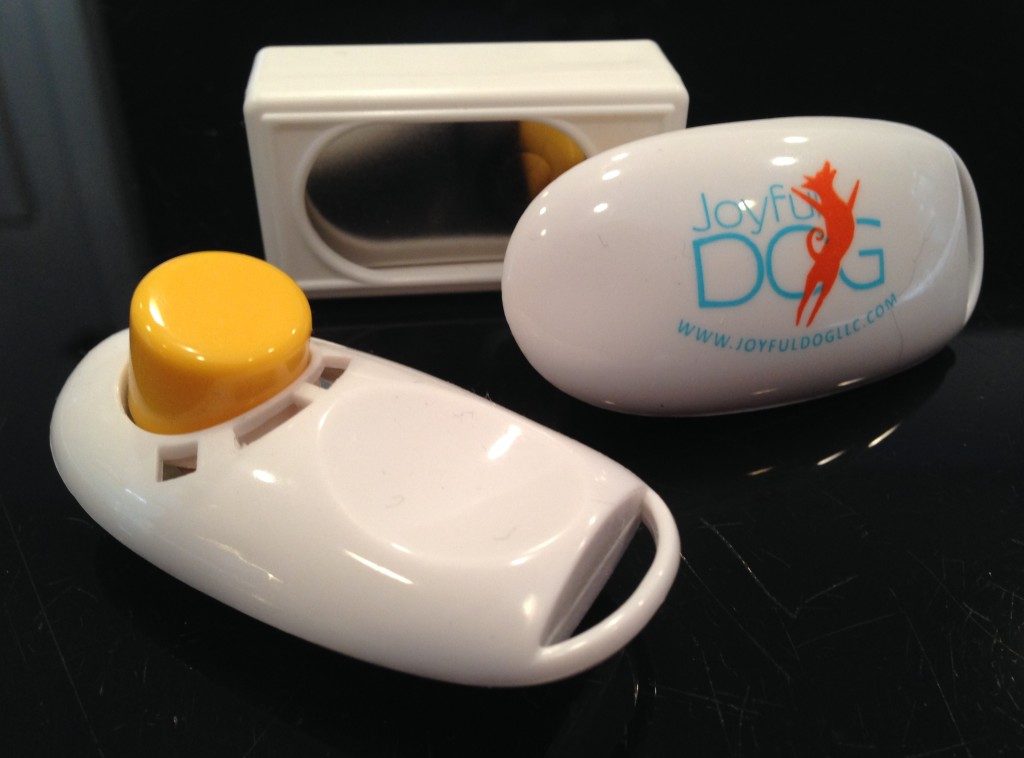Fido’s First Tricks: Class 3
First, a quick recap, then a few words about teaching your dog to “crawl”:
Spin:
Remember to wait until you’ve got the behavior pretty solid (ie, you move your hand and your dog *enthusiastically* spins in the correct direction a bunch of times) before you add a name to the behavior. The reason why it’s best to wait on this is that you don’t want to name an incomplete behavior, or your dog might understand “spin”, for example, to mean that he moves to his left 3/4 of the way, or that he performs the behavior hesitantly. Also, remember to approach spinning left and spinning right as two different behaviors; give them each different cues. As you recall, we started the spin with a moving hand target. You can review hand targeting here https://joyfuldogllc.com/student-resources/fidos-first-tricks-class-1/ The password for this section of the web site is Click!
Loose leash walking:
You and your dogs walked a serpentine course around cones, with you clicking and treating for them being in the “zone” near you. Like every behavior you work on with your dog, this one should be “thin-sliced”; that is, start off clicking and treating each single successful step you and your dog take together. As she gets better at that level, move onto clicking and treating every third step, then every fifth, and so on. When you move your training to a new environment, such as from inside the house to the yard, remember that your dog may not be able to just pick up working at the same level as before, because of the new distractions. For example, if you were clicking and treating every 10 steps inside the house, consider starting off clicking and treating every 5 steps in the yard at least a few times before increasing the number steps.
The “crawl”:
Begin thinking about how to “thin-slice” a behavior for training.
Think about the steps you could use to teach your dog to “crawl”. You can decide exactly what you want the behavior to look like in your dog, but for now, imagine that your dog starts out with her belly and elbows on the floor, and her rear end remains at the same level as her back. When your dog moves forward, it is with a sort of “ooching” movement, elbow and belly remaining on the floor, and rear end not popping up. Break down this behavior into the smallest individual parts you can think of (thin-slicing). For example, you might start with:
- Get dog to lie down with front legs out in front.
- Get dog to lie down with front legs out in front and back legs under rear end.
- Get dog to move one paw forward, moving a treat a very small distance away from the dog, along the floor in front of him (luring).
- Get dog to move other paw forward, moving a treat a very small distance away from the dog, along the floor in front of him…..
If your dog does not have a “down”, then plan your steps to train that first.
A challenge might come when your dog is moving a few inches on his belly, but then you notice that he raises his rear end each time he moves forward — what will you do to get him to move without raising his rear end? Are you moving too fast, and now realize that there are some steps you should add to encourage the movement you want? This is all about creative problem solving!

Things to Bring
- Your Pup!
- Well-behaved children and spouses 8 or older.
- A flat collar, harness, or martingale collar.
- Lots of pea-sized soft treats in at least two different flavors. 200 tiny pieces are not too many. Some suggestions: Hot dogs, String cheese, Meatballs, Chicken or Tuna, Baby food (in a camping tube), Vienna sausages, Liverwurst, Thin-sliced Beef.
- A fanny pack, carpenter’s apron, or treat pouch to hold your 200 tiny pieces.
- A 6-foot leash.
- A mat, bathmat, towel, or blanket for your puppy or dog to rest on.
- Water and a bowl for when your pup gets thirsty.
Do's and Don'ts
- Do let us know if your pup has any food allergies so that we can be careful not to give him a troublesome treat.
- Don’t bring prong, choke, shock, or citronella collars.
- Don’t bring Flexi or other retractable leashes.
- Puppies and dogs should not meet while on leash in class, or while coming and going. There will be opportunities for off-leash play for compatible puppies, and good neighbor exercises for older pups and dogs.
- Don’t feed a heavy meal before coming to class. In fact, your in-class treats can serve as your dog’s breakfast on class day!
- If your puppy or dog is ill, please leave him at home to recuperate, but feel free to come to class without him so that you can learn what’s on the agenda for that day.

